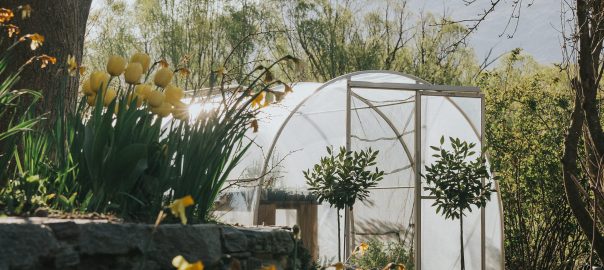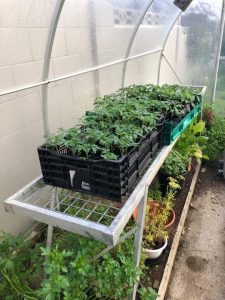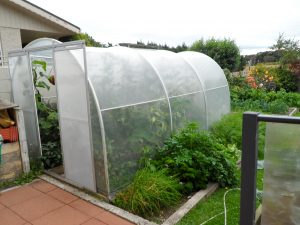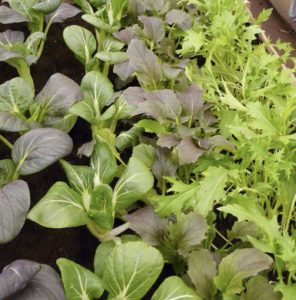
SEPTEMBER IN THE TUNNELHOUSE, SPRING IS HERE!
May 24, 2023
September in the tunnelhouse
Welcome to Morrifield’s monthly garden guide where we go undercover to bring you the best tips and tasks for great greenhouse growing. At last, spring has arrived, and the busiest month of the season is calling us into the tunnelhouse. Wherever you are in the country, there’s a whole host of fun to be hand, and new growing opportunities to look forward to!
Morrifield’s Gardening Zones
Our long maritime country is filled with exciting microclimates. That means your gardening zone may be quite different to your neighbour’s, just a few kilometres away. Use our simple descriptions to help gauge which undercover zone sounds like you!
Zone 1 (Warm Winters, Hot Summers)
Zone 2 (Mild Winters, Hot Summers)
Zone 3 (Cold Winters, Mild Summers)
Zone 4 (Severe Winters, Hot Summers)
Top Tasks Around the Country
All Zones
Trust home grown
It can seem so much simpler to head to the garden centre for your greenhouse seedlings rather than grow your own. But this shortcut soon turns to custard. That’s because many store-bought seedlings are regularly sprayed to rid them of pest insect infestations. Once you get the seedlings home (especially if you are an organic grower), insects eggs on the underside of leaves soon hatch, and the population takes off! Play it safe, and grow your own plants. If you must buy from the garden centre, take along a magnifying glass to check for signs of insects and eggs, before you purchase.

Tap into tomatoes!
Growers everywhere are starting to raise their own tomato seedlings. If you’re looking at a packet of your favourite tomato seed, and wondering if it’s too old to germinate, bear this in mind: tomato seed remains viable for longer than many other seeds. Provided it’s been stored in a cool, dry place (preferably sealed in foil), an encouraging number of the seeds seed will still germinate. Give them the best start in life by sowing them in individual containers of fine seed raising mix, and placing these on a germinating heat pad. Sow the seed more thickly than you would normally (5-6 seed to a container instead of 1 or 2).
Screen saver
Before the weather grows warmer, giver serious thought to fitting a screen to your greenhouse (if you have a Morrifield tunnelhouse, the screen can be retro-fitted). Screens allow for essential ventilation without the risk of birds entering the greenhouse to dig up plants and attack ripening fruit. A screen will also exclude pest insects, prevent beneficial predator insects from escaping (beneficial insects can be purchased from Bioforce), provide shelter from wind, and keep out pesky cats.

Fire up the feed!
Rapidly growing plants thrive on readily available nutrients fed in solution form. While you can always head to the garden centre for liquid fertilizer, it’s more economical to make your own. Best of all, DIY solutions can be tailor made to suit the edibles you’re growing! Start with the basics by soaking 1 bucket of compost, 1/2 a bucket of nettles, and ¼ of a bucket of wel-rotted animal manure in 4 buckets of water, for 2-3 days. Stir vigorously 2-3 times during this period. Next, scoop out 4 individual buckets of soaking liquid. To make a tomato-specific tonic, add chopped kelp and a cup of non-toxic, untreated, unpainted firewood ash. For an aubergine feed, add a handful of fish meal to the bucket. Make a cucumber cocktail by stirring a handful of blood and bone into a bucket of basic mix. For a capsicum boost, add the works with extra well rotted animal manure, kelp and torn comfrey leaves. Leave your buckets of goodies to soak for at least a week before straining off the liquid and bottling in screw-top containers. Feed your growing plants every week to ten days throughout the growing season.
Zone 3 & 4
Early birds
Most cool-climate zucchini growers plant their seedlings outdoors from October through to December. However, an early spring start for these tender treats is possible when you sow seed into bucket-sized bags of rich potting mix, and grow them on in the greenhouse. A zucchini’s delicate root system means the plant doesn’t like to be disturbed. However, but once the weather has warmed up outside, the bag can placed in a planting hole, then carefully split open with scissors to gently release the zucchini with minimal disturbance. Tip: choose jute bags rather than black plastic grow bags – they can be popped into the compost when you’ve finished with them, or you can recycle the black plastic bags.

Hedging your bets
Cool climate gardeners are among the keenest of tunnelhouse growers, forever ‘testing the limits’ as to what can be successful in their undercover environment. If you want to experiment, consider growing new plants in containers, even though you may be growing your regular heat-lovers in-ground. That way, if there simply isn’t enough heat for your experimental plants to thrive, they can be easily removed without disturbing the roots of their neighbours. And a quick growing tomato or cucumber can be popped in to fill the space.
While you wait
Waiting for the world to warm up can be disheartening, but not more so than popping your heat-loving plants into the greenhouse while it’s still too cold for them. Cold, struggling plants are vulnerable to disease, and are unable to take up the nutrients you’ve supplied them with. While you wait for the heat to arrive, fill your greenhouse with fast-growing Asian and microgreens. Any that haven’t been used up by the time the heat-lovers are ready to be planted, can be dug back into the ground to help feed the bed.

A staged show
The greenhouse is a goldmine for cool climate growers when they use their September undercover space to raise salad greens and brassica seedlings. But remember – these little plants all require their fair share of light. Staged (or ‘terraced’) shelving is the way to help it happen. If you don’t want to purchase staged shelving, make your own using untreated, unpainted boards and bricks. Just make sure the structure is stable so that it doesn’t fall and damage the sides of the greenhouse.
Rooted in warmth
No one wants their greenhouse overrun with sprawling vines, yet, in a cooler climate, heat loving plants such as melon, kumara, kumikumi, and pumpkin, often do best when planted indoors. The solution is simple: start your vine off in a corner of the greenhouse, then tunnel under in one or two places to make a small escape route for the vine to grow through. It can then grow on, into the outdoors while its roots benefit from the warmth of the greenhouse soil.
Sow me undercover now
Zones 1 and 2
Aubergine, basil, capsicum, chilli, cucumber, lettuce, melon, zucchini, tomato (all summer varieties).
Zone 3 and 4
In the greenhouse (in-ground): fast-growing microgreens, ‘Tasty Tendrils’ peas, potatoes and yakon (in bags to be shifted outdoors, later). In the greenhouse (in seed trays or individual containers): baby carrots, brassica, lettuce, silver beet, spinach, spring onion. Indoors on germination heat pads or a sunny window ledge: basil capsicum, chilli, tomato, zucchini.
Transplant me undercover now
Zones 1 & 2:
lettuce, turmeric, zucchini
Zone 3:
early tomato
News and views
Not only is your tunnelhouse great for fruit and Vegetables, we have many customers growing flowers.

Jen from Oxford in North Canterbury uses her Tunnelhouse for her flower business @theflowerlabnz and specialises in dried flowers. Her tunnelhouse will be brimming with Spring goodies!
